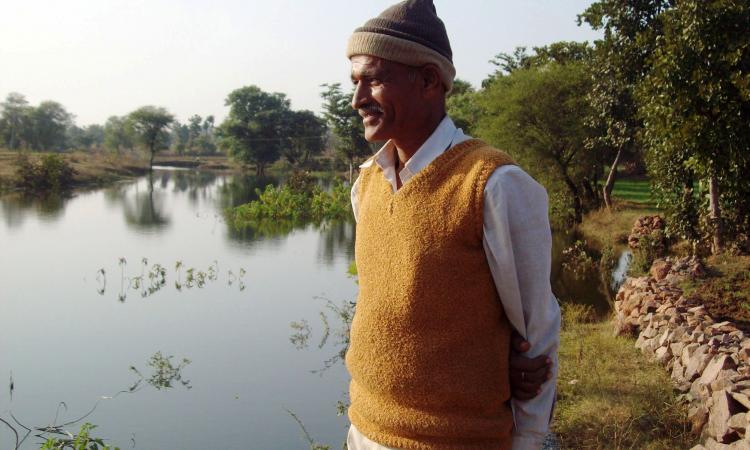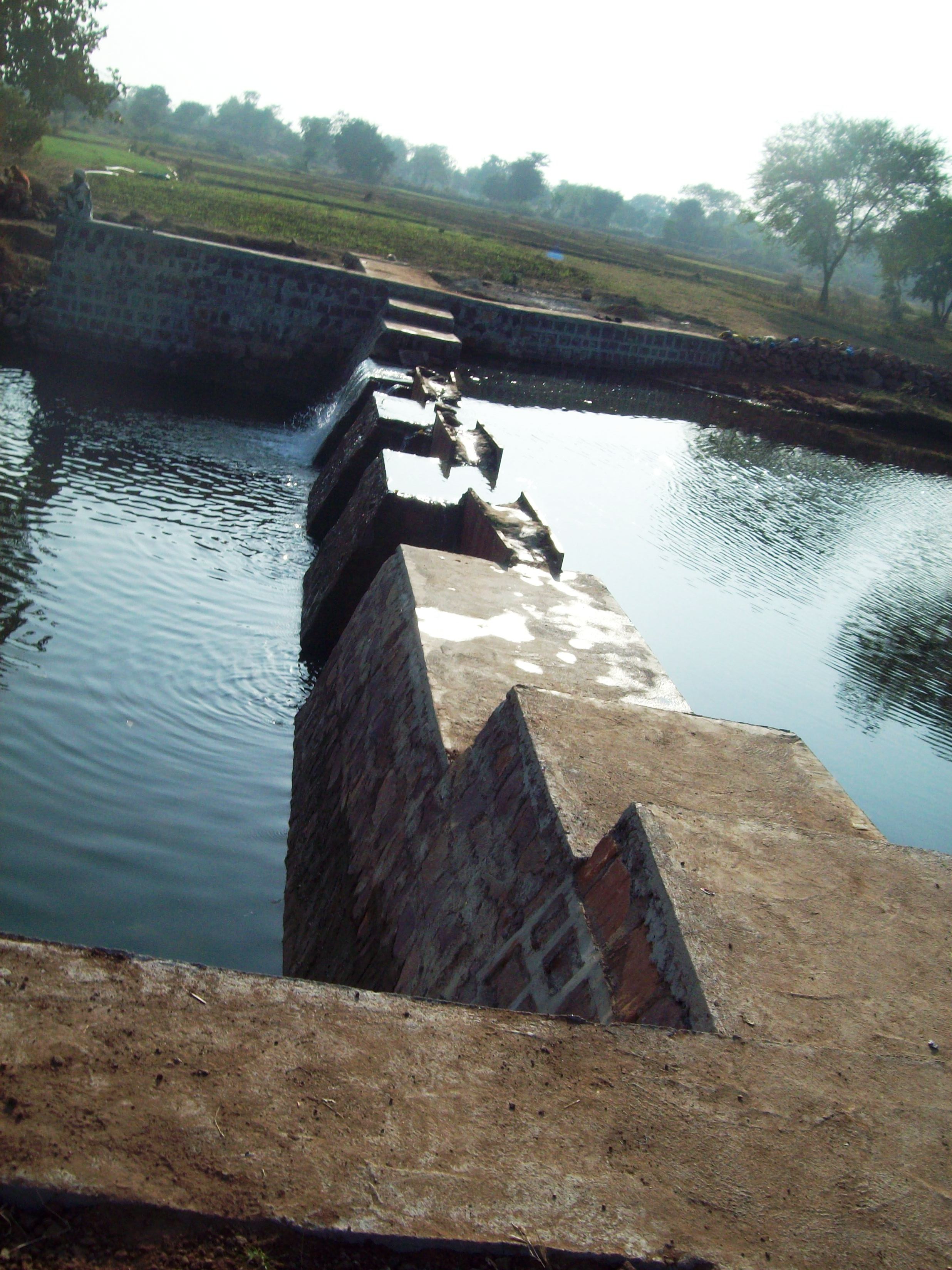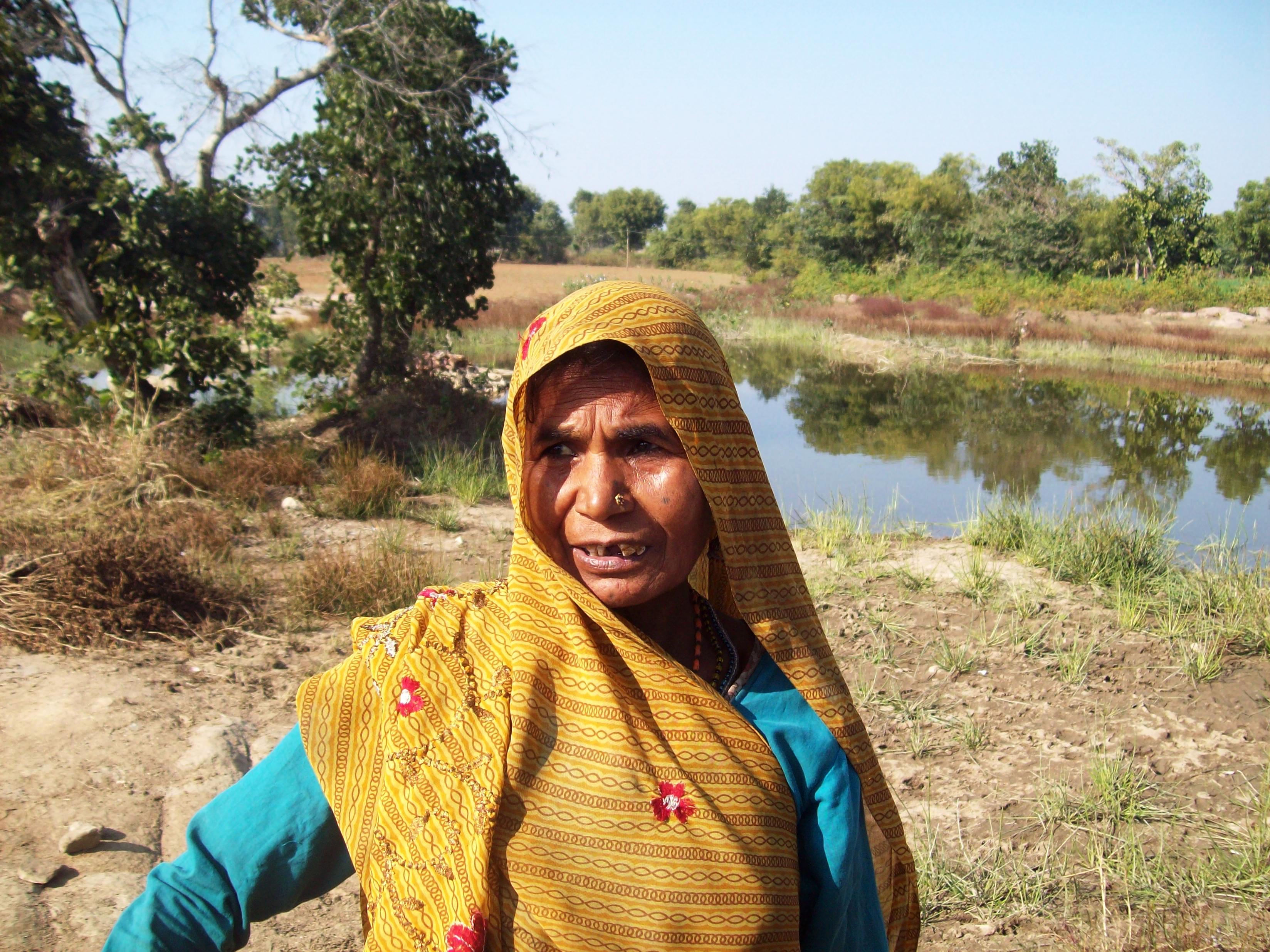
A little less than 40 km away from the district headquarters of Tikamgarh in northern Madhya Pradesh lies a watershed, which is an area of land where all of the water that is under it or drains off of it goes into the same place (US Environmental Protection Agency). Called the Baldeogarh watershed, it occupies an area of 10,317 hectares across 24 villages of Baldeogarh and drains into the Dhasan river.
The area is economically and politically isolated from any major commercial centre. It is characterized by a rainfall of 1057 mm and has red sandy soil considered to be of poor quality and a fairly low stage of groundwater development (55%) .
View Tikamgarh in a larger map
The problem
The area has been affected by increased outmigration to cities like Delhi and the additional cash income from migratory wage labour is not invested in farm-based activities. Most people are unable to give much time to their farms and water-based activities. The agricultural productivity of the main crops wheat, urad, gram and soyabean is low as a result. Broadcasting (scaterring) of seeds is the normal agricultural practice in the area. This uses up twice the amount of seeds than that used in other sowing methods like line sowing. This is the single most factor that keeps crop yields low in the soybean-wheat cropping system prevalent here.
Most people here are very poor. During the agricultural lean season skipping meals is a frequent occurrence for many households. Also, the livestock in the area are low yielding.
The response
It is in this backdrop that the Society for Promotion of Eco-friendly Sustainable Development (SPESD), a NGO in collaboration with the Hindustan Unilever Vitality Foundation (HUVF) began working on an integrated watershed programme in the area. This Public Private Partnership (PPP) was encouraged under the Government of Madhya Pradesh's (GoMP) Rajiv Gandhi Mission for Watershed Management. The MoU between GoMP and HUVF was signed at the end of 2011.
The project interventions were to “improve quality of life along with the establishment of local governing institutions and institutional systems to yield equal opportunities and equitable access to resources” (1). The cost sharing ratio between the MP govt and HUVF was 90:10. The main objectives of the HUVF-SPESD project, which aims to directly impact 44,000 people in the area were two-fold: conserving water and improving livelihoods.
Conserving water
- Revive traditional structures as well as create new infrastructure for water conservation
- Increase the groundwater recharge in the area
- Increase water use efficiency in agriculture and domestic sectors by adopting water management techniques
- Conserve fertile soil through soil and moisture conservation
Improving livelihoods
- Improve the landscape and agricultural productivity to enhance livelihoods
- Raise the income of the poor (landless, small and marginal farmers) through agricultural and non-agricultural-based interventions
The process

To begin with, the implementing agency SPESD began work on improving awareness about soil and water conservation within the community. This was made easy because of SPESD’s presence in the district. “SPESD had been working in the watershed on the livestock development programme and providing breeding service to thousands of families through its three centres”, says J. L. Patidar, of SPESD.
People were involved in the planning processes at the community level. Community-based institutions such as Self Help Groups (SHG) and Watershed Committees were set up. An Exposure visit to a model watershed and capacity building activity was arranged. Physical work was taken up for sustainable management of soil, moisture and water conservation.
It is expected that these activities will increase agricultural production by 15 to 20%, according to Ramnath Raikwar, Chairman of the Watershed Committee. "The challenge for the project was to develop a participatory plan at the village level for managing the physical assets created for soil and water conservation", says Kalpana Thakarey of SPESD.
In Garroli village, the community wanted to construct a small dam. Some farmers were wary of this as they feared their lands would be submerged. The technical team of SPESD had elaborate discussions with those opposed to the dam to allay their fears. Subsequently, some thirty farmers who were to directly benefit from the small dam set up a User Group.

The dam water was available till the onset of summer (March). The User Group could irrigate around 50 ha land through the use of a diesel engine since power being was in short supply in the area. The backwater of the dam extended up to 3 km on the upstream. Farmers who used to cultivate only kharif crop are now taking the second rabi crop. Soyabean and pulses with an average yield of 7-8 quintals per hectare are also being taken. This assures a net income of over Rs. 10000 per acre in the kharif season. The second crop of wheat with a yield of 3-8 tons/ acre assures a net income of over Rs. 20000 per acre.
Apart from irrigation water, some of the constraints in agriculture like poor field preparation, no seed treatment prior to sowing, faulty sowing through broadcasting method etc., were overcome under the watershed project. "Line sowing instead of broadcasting of seeds, has shown an increase in yield by 22% in about 27 acres in this village where it was tried for the first time", says Sikander of SPESD. They are now planning to construct a series of check dams in their village.

In Chak Madhosingh village, a dug out pond has been constructed for recharge and domestic purposes like livestock drinking but this has created a conflict according to Guddi Bai, one of the nine members of the User Group for the dug out pond. The members of the User Group are not allowing others to use the water body. This is unfair given that poor farmers have worked on it given that no other work was available. So in a sense the poor wage labour were given subsidized payments while only the User Group members are going to enjoy the assets.
This only goes to show that the present mechanism of subsidizing conservation only, discriminates against the poorest especially landless members of the community. The project has to now clearly look beyond the physical aspects of conservation. Alternative incentives should be provided to the poorest and a way found to finance improvements in their assets.
Reference
(1) Story of water, HUVF, 2012